Volunteering for FAME Medical Clinic since December has its benefits. Aside from getting to know the locals, we have befriended many of the Maasai staff. Evenings, they come by and we laugh trying to communicate, learning a few Maasai words, lots of pointing. Never short of a smile, their company is wondrous, I have become enamored with the Maasai culture.
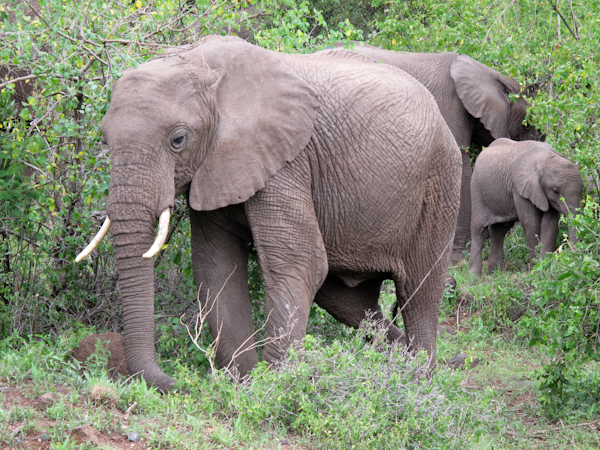 Just so happens an escari or night watchman, has welcomed us to his family’s boma in a Maasai village about 30 km south east. Halfway to his village, we are surprised as a herd of elephants emerge from the forest and decided to linger before crossing the road. Amazing creatures with ivory tusks chomping grass and plants. A baby saunters closer as its mother’s ears fan out, giving us our first warning. A trunk is raised as Jay captures these large beasts. We are in awe and drive away slowly.
Just so happens an escari or night watchman, has welcomed us to his family’s boma in a Maasai village about 30 km south east. Halfway to his village, we are surprised as a herd of elephants emerge from the forest and decided to linger before crossing the road. Amazing creatures with ivory tusks chomping grass and plants. A baby saunters closer as its mother’s ears fan out, giving us our first warning. A trunk is raised as Jay captures these large beasts. We are in awe and drive away slowly.
Off the road, a left at the baobab tree, right at the acacia tree, one room school house on the right, steer away from dirt path, up the left bank.….
As the Maasai steps from the car, we are greeted by his family, more and more emerge from their mud huts. He lovingly rubs the heads of all the women and children as they bow in respect. Laughter spreads as the names of his numerous brothers, their wives and children are introduced.
The eldest brother and the first to build his ‘own’ boma a few hundred feet away, walks us around, proudly showing off his father’s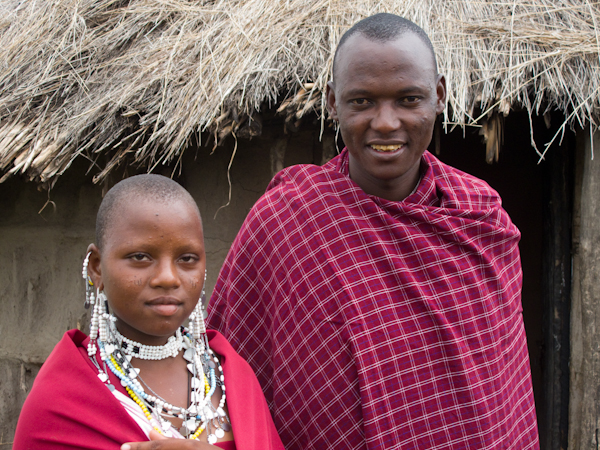 land, “The cows and goats live in these outside pens while the baby livestock sleep inside the huts…” Once our eyes adjust to the darkness of the mud hut, a fire pit, stools and sleeping areas emerge. The girls sleep on one side, the men on the other. Sitting next to Jay, he reveals fascinating stories of daily life, they choose to live without vehicles, electricity, or running water, they prefer to keep their pastoral, nomad way of life as warriors and herders of livestock. They spend money saved from selling livestock on food, education and healthcare. He built the only primary school room in his village, it sits in front of the baobab tree where he and a few others learned to read and write many years ago.
land, “The cows and goats live in these outside pens while the baby livestock sleep inside the huts…” Once our eyes adjust to the darkness of the mud hut, a fire pit, stools and sleeping areas emerge. The girls sleep on one side, the men on the other. Sitting next to Jay, he reveals fascinating stories of daily life, they choose to live without vehicles, electricity, or running water, they prefer to keep their pastoral, nomad way of life as warriors and herders of livestock. They spend money saved from selling livestock on food, education and healthcare. He built the only primary school room in his village, it sits in front of the baobab tree where he and a few others learned to read and write many years ago.
So proud to be Maasai, he loves his culture and the shuka, red checkered warrior dress, worn by the men. Animated, he tells us the right of passage for boys of 13 or 14. Becoming a warrior or moran usually lasts a month, they are taken with the elders, fed well and educated about the warrior ways, then when ready, the ceremonial circumcision to manhood begins. Ornate beaded jewelry adorn both women and men of all ages, weighted ear pieces create beautiful large loops in their earlobes. Bodily markings on the face, chest and arms often distinguishing families. Jay and I receive beaded bracelets as welcoming gifts. He and the other brothers love their cell phones, they are not afraid of blending modern parts of Eastern African life, as long as the Maasai culture can keep their age old traditions of grazing, interestingly they disdain agriculture and any form of land ownership. I wonder what North America would look like if the Indians had been allowed to keep their languages and cultures, instead of moving them onto reservations, forcing them to speak English and ending their ceremonial traditions?
 The escari Maasai and his young wife share his mother’s hut, they will move into their own when they become pregnant. Another young daughter also lives in the hut to help out. The grandmother keeps her own hut near the goat corral and another young girl stays with her. The older brother takes us to his boma down the way where his third daughter of two months old and wife are resting, at thirty-nine years he is just starting and has a few mud huts built. His wife places the healthy baby in my arms as he tells us about childbirth. Alone with only women the mother delivers in her hut, men are not allowed to see his wife or baby for 2 weeks. Several celebrations are given for the family, the boma and the community with sharing of goats and cattle.
The escari Maasai and his young wife share his mother’s hut, they will move into their own when they become pregnant. Another young daughter also lives in the hut to help out. The grandmother keeps her own hut near the goat corral and another young girl stays with her. The older brother takes us to his boma down the way where his third daughter of two months old and wife are resting, at thirty-nine years he is just starting and has a few mud huts built. His wife places the healthy baby in my arms as he tells us about childbirth. Alone with only women the mother delivers in her hut, men are not allowed to see his wife or baby for 2 weeks. Several celebrations are given for the family, the boma and the community with sharing of goats and cattle.
We leave the boma to meet his father at the weekly Maasai market. Hundreds of Maasai gather to sell livestock, slaughter and cook up a prize cut, drink banana beer, buy tire sandals, you name it…
A beautiful culture so alive and preserved, a breathing juxtaposition of cell phones and ancient ceremonies. Of course the reality is complicated with a continual push to address issues such as women’s rights, education for all, not enough roaming land for the tribes and the list goes on. But as more are educated and interested in preserving culture with progress, we can hope a balance is achieved.
[smooth=id:21]

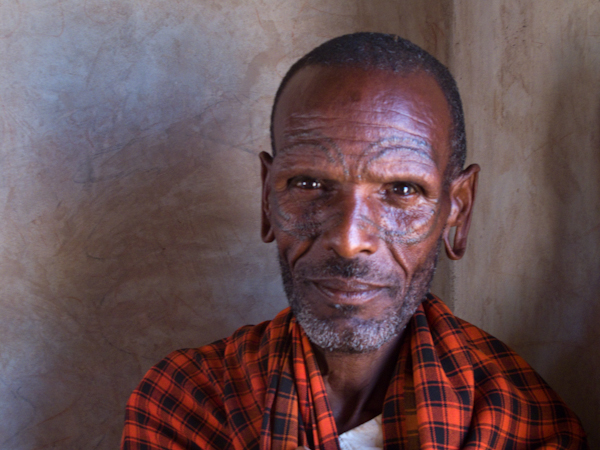 I’d taken to riding in the Land Rover with the tanzanian staff. It started on the second day in order to beat the mobile clinic to the village and capture video of it’s arrival, but from that moment on I kept my spot in the car. I preferred the intoxicating laughter as the staff amused themselves in rapid fire kiswahili. I didn’t understand a lick of it, but Amiri translated bits and entertained me in english as well. I spent the mornings strolling the village before work began, occasionally raising my camera or greeting the locals.
I’d taken to riding in the Land Rover with the tanzanian staff. It started on the second day in order to beat the mobile clinic to the village and capture video of it’s arrival, but from that moment on I kept my spot in the car. I preferred the intoxicating laughter as the staff amused themselves in rapid fire kiswahili. I didn’t understand a lick of it, but Amiri translated bits and entertained me in english as well. I spent the mornings strolling the village before work began, occasionally raising my camera or greeting the locals.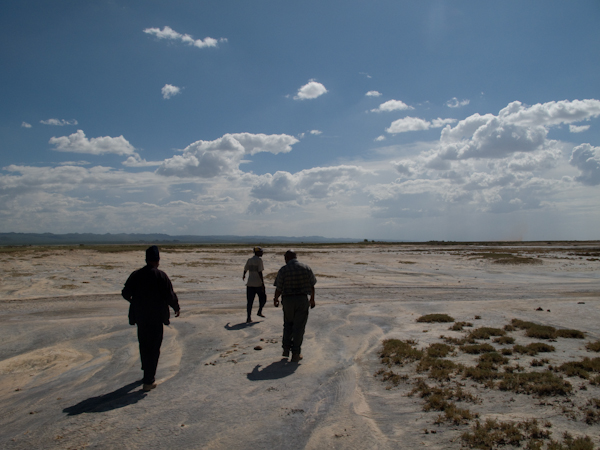 I’ve been to some pretty remote spots, but this was exceptional. Roads forged simply by driving the terrain. Tracks led off in multiple directions as we tried to ascertain the paths of least resistance. It was afternoon and I’d been invited to do a home visit for a patient unable to walk the return trip. Turn right at the shrubs here, go thru the break in the fence there, there were six of us, including two men that weren’t among the one hundred selected for treatment that day. Their knowledge was our map and on the return, they wanted to take me to maji moto, a small bubbling natural hot spring in the middle of a vast flat salt plain, surrounded by joshua tree-like mounds of granite in the distance.
I’ve been to some pretty remote spots, but this was exceptional. Roads forged simply by driving the terrain. Tracks led off in multiple directions as we tried to ascertain the paths of least resistance. It was afternoon and I’d been invited to do a home visit for a patient unable to walk the return trip. Turn right at the shrubs here, go thru the break in the fence there, there were six of us, including two men that weren’t among the one hundred selected for treatment that day. Their knowledge was our map and on the return, they wanted to take me to maji moto, a small bubbling natural hot spring in the middle of a vast flat salt plain, surrounded by joshua tree-like mounds of granite in the distance.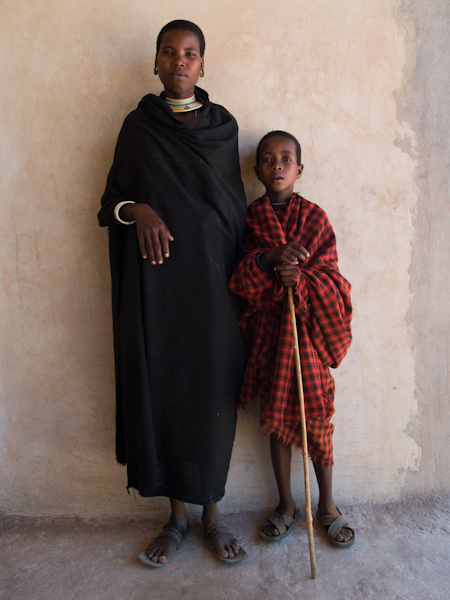 The following day, one of the men returned to the clinic and was admitted. I greeted him in the morning and took his portrait. That afternoon I greeted him again, this time welcoming him to the lab, Darlenes signature flowing across his lab slip. I prepared a slide for malaria and test tube for brucella as she prescribed. In the corner of the lab, a makeshift studio forms and I snap portraits and the drama troup drums in the background, surrounded in dance. Educational slideshows, talks and skits entertain, as do brief encounters with their own image on my camera. Well beyond electricity, this landscape is one where firewood is precious and living is hard, but the spirit is strong and I sincerely hope that every one of these wonderful faces can know the feeling of good health.
The following day, one of the men returned to the clinic and was admitted. I greeted him in the morning and took his portrait. That afternoon I greeted him again, this time welcoming him to the lab, Darlenes signature flowing across his lab slip. I prepared a slide for malaria and test tube for brucella as she prescribed. In the corner of the lab, a makeshift studio forms and I snap portraits and the drama troup drums in the background, surrounded in dance. Educational slideshows, talks and skits entertain, as do brief encounters with their own image on my camera. Well beyond electricity, this landscape is one where firewood is precious and living is hard, but the spirit is strong and I sincerely hope that every one of these wonderful faces can know the feeling of good health.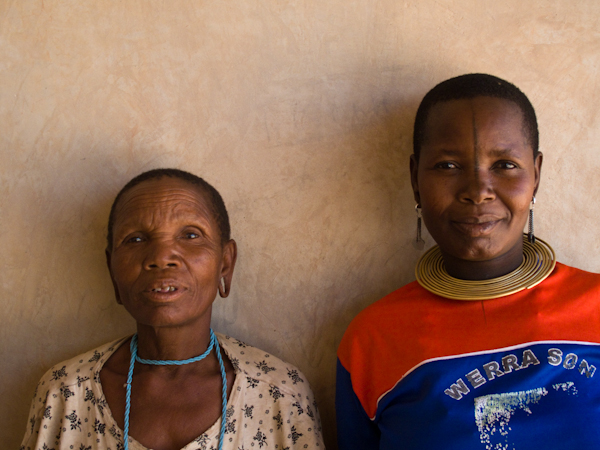 Sitting on the ground, I share the shade of an acacia tree with fifteen mamas from the Barabaig tribe. They ask about my hair, skin, freckles, about my tribe and wonder why I am so small, did I not get enough breast milk as a baby? They think all white women are chunky and look alike. Cracking up with laughter, we joke until I have to walk back to the mobile clinic with my translator. For five days we are in the remote bush country of Northern Tanzania, and for those that know me, a childhood dream come true.
Sitting on the ground, I share the shade of an acacia tree with fifteen mamas from the Barabaig tribe. They ask about my hair, skin, freckles, about my tribe and wonder why I am so small, did I not get enough breast milk as a baby? They think all white women are chunky and look alike. Cracking up with laughter, we joke until I have to walk back to the mobile clinic with my translator. For five days we are in the remote bush country of Northern Tanzania, and for those that know me, a childhood dream come true.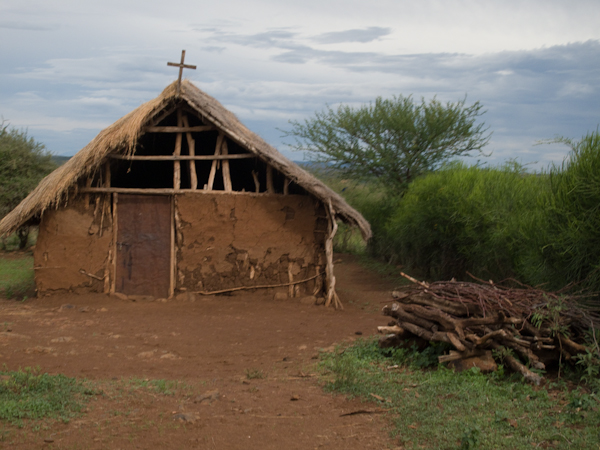 From a remote medical clinic in Karatu, I spent three weeks figuring out East African infectious diseases, tropical medicine, parasites- a world far removed from orthopedics. Leaving the comfort of ‘home’, we turn off the asphalt and push another two and a half hours into highland desert territory, accessible only by 4×4. Baobab trees, dried river beds, mud huts, rows of onion and corn fields, the remoteness is beautiful. Children run to catch our red and white medical van, more and more huts line the road, people wave, a wooden cross sits atop a thatched church, we are in the tiny village of Barazani.
From a remote medical clinic in Karatu, I spent three weeks figuring out East African infectious diseases, tropical medicine, parasites- a world far removed from orthopedics. Leaving the comfort of ‘home’, we turn off the asphalt and push another two and a half hours into highland desert territory, accessible only by 4×4. Baobab trees, dried river beds, mud huts, rows of onion and corn fields, the remoteness is beautiful. Children run to catch our red and white medical van, more and more huts line the road, people wave, a wooden cross sits atop a thatched church, we are in the tiny village of Barazani.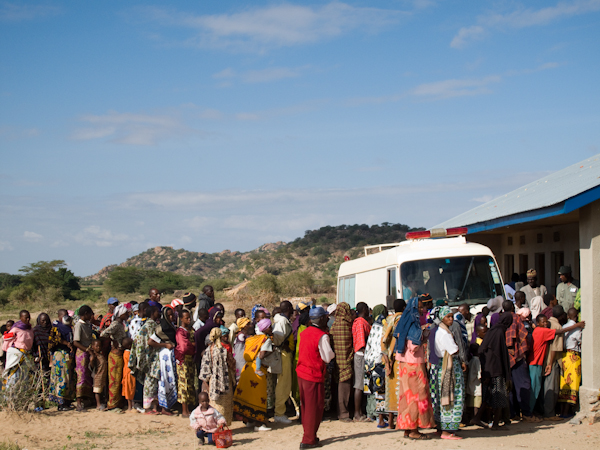 An hour later, the towering old Baobab tree marks our right turn. What appears a row of colorful shrubs in the distance, comes into view- lines of elderly men and grandmothers wrapped in bright Kanga blankets, mamas in elaborate head scarfs with sick children under wing are all awaiting our arrival. Many have walked miles and sometimes days to reach us.
An hour later, the towering old Baobab tree marks our right turn. What appears a row of colorful shrubs in the distance, comes into view- lines of elderly men and grandmothers wrapped in bright Kanga blankets, mamas in elaborate head scarfs with sick children under wing are all awaiting our arrival. Many have walked miles and sometimes days to reach us.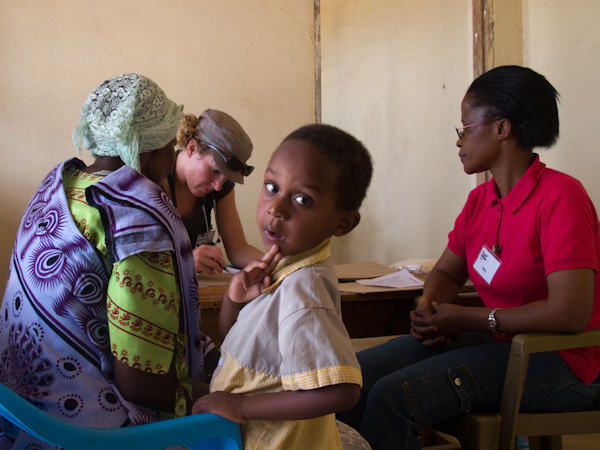 For three days the small room towards the back becomes my exam room. Mary translates complaints as I scribble notes onto charts. Reaching into my plastic bag, pulling out a thermometer or stethoscope, there is little to work with, and so I rely on Mary to translate questions. Not an easy task, these people don’t have watches or calendars, they have a different understanding of time, age and duration. Swahili is the national language, but in the bush where few go to school, tribal languages are spoken requiring Mary to have her own interpreter.
For three days the small room towards the back becomes my exam room. Mary translates complaints as I scribble notes onto charts. Reaching into my plastic bag, pulling out a thermometer or stethoscope, there is little to work with, and so I rely on Mary to translate questions. Not an easy task, these people don’t have watches or calendars, they have a different understanding of time, age and duration. Swahili is the national language, but in the bush where few go to school, tribal languages are spoken requiring Mary to have her own interpreter.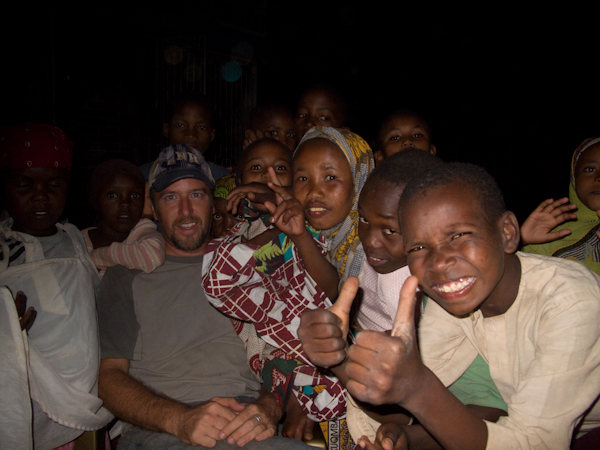 Every evening we return to our small guest house, Califonia[sic], where 7 rooms face the courtyard. A communal setting for heating water, scrubbing clothes and chatter. The well water heats atop a charcoal flame, we pour what is needed into buckets, and carry it to the wood latrine. A bucket bath by hand becomes a cherished ritual after a long day in the bush. Warm beers and stories carry us into the night. Kerosene lanterns stay outside the small rooms, allowing only a whisper of light. Another amazing day in the remote African bush.
Every evening we return to our small guest house, Califonia[sic], where 7 rooms face the courtyard. A communal setting for heating water, scrubbing clothes and chatter. The well water heats atop a charcoal flame, we pour what is needed into buckets, and carry it to the wood latrine. A bucket bath by hand becomes a cherished ritual after a long day in the bush. Warm beers and stories carry us into the night. Kerosene lanterns stay outside the small rooms, allowing only a whisper of light. Another amazing day in the remote African bush. For those who don’t know, I have a minor obsession with the rhinoceros and from our back porch I can see the Ngorongoro Crater, which is full of them. For weeks I’ve stared at it’s rim over morning tea and evening beers. Naturally, I needed to look inside.
For those who don’t know, I have a minor obsession with the rhinoceros and from our back porch I can see the Ngorongoro Crater, which is full of them. For weeks I’ve stared at it’s rim over morning tea and evening beers. Naturally, I needed to look inside.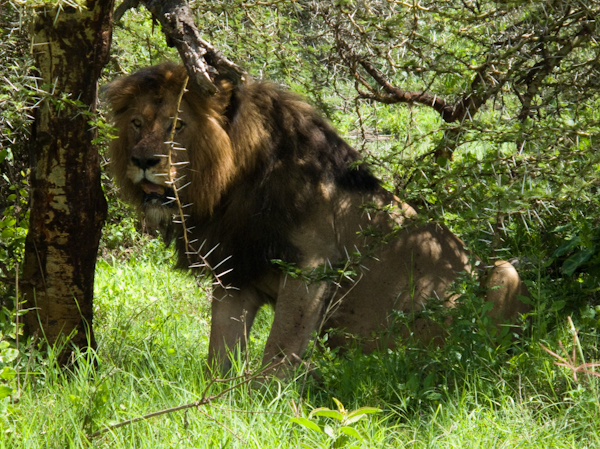 This didn’t save us much, but as a ranger’s guest, it bought us the right to go off road. So when we saw a huge male lion wander off into the brush we were able to run our little Land Rover right in after him. My door, coincidentally didn’t really shut and rattled delicately on its hinge. It also bought me the freedom, provided no one was looking, to get out and take pictures, but though he looked well fed, I stayed in the vehicle to see the lion.
This didn’t save us much, but as a ranger’s guest, it bought us the right to go off road. So when we saw a huge male lion wander off into the brush we were able to run our little Land Rover right in after him. My door, coincidentally didn’t really shut and rattled delicately on its hinge. It also bought me the freedom, provided no one was looking, to get out and take pictures, but though he looked well fed, I stayed in the vehicle to see the lion.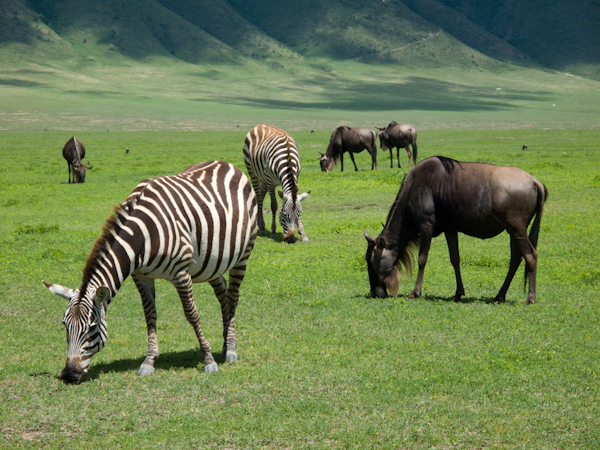 If you can imagine Crater Lake, the Ngorongoro is bigger, warmer, and with a lot less water. It’s sparsely forested in spots, but otherwise flat enough and big enough to host the 2010 World Cup, all games played simultaneously.
If you can imagine Crater Lake, the Ngorongoro is bigger, warmer, and with a lot less water. It’s sparsely forested in spots, but otherwise flat enough and big enough to host the 2010 World Cup, all games played simultaneously.